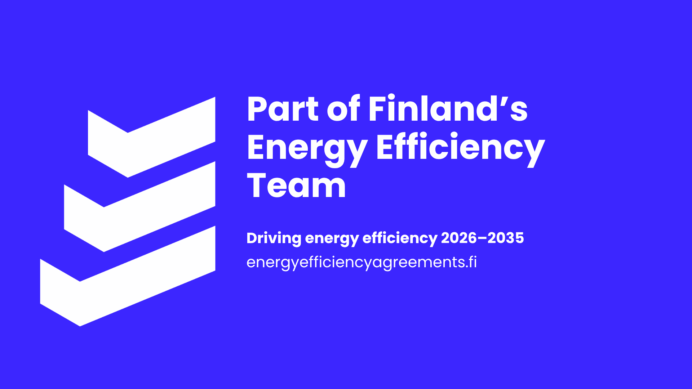
Pohjolan Voima continues its commitment to the energy efficiency agreement for the new period 2026–2035. All group companies participated in the previous period and will also commit to the upcoming one.
“Continuous development of sustainable energy use aims, among other things, to reduce emissions and promote security of supply, energy self-sufficiency, and the balance of the energy system. The reduction of carbon dioxide emissions targeted through energy efficiency is particularly linked to the objectives of our biodiversity programme at Pohjolan Voima,” says Katja Permanto, Sustainability Manager at Pohjolan Voima.
Agreements Guide More Efficient Energy Use Through Voluntary Means
The Energy Efficiency Agreement for the business sector is a voluntary agreement between the state and industry for the efficient use of energy. The EU Energy Efficiency Directive sets binding energy efficiency targets, and the agreement is a joint means of fulfilling the national obligation. Operators join the agreement voluntarily, set their own interim and final targets for the upcoming period, and report on them annually in the monitoring system.
“Each of our production companies, which generate different forms of energy, is on track to achieve its targets for the current period, which is fantastic. They will also define their own targets for the next period. Companies generating electricity will set targets for improving the efficiency of electricity use and production. In addition, thermal power companies will set targets for improving the efficiency of primary energy use. All our production companies have an energy management system in place, either EES+ or ISO 50001, which brings systematicity to energy efficiency work. The system requires a ‘bank’ of measures and also provides a framework for documentation,” Permanto explains.
The range of energy efficiency measures at Pohjolan Voima and its production companies is broad – they may relate to operating methods, building technology, or directly to power plant machinery. Significant fuel savings have been achieved, for example, through the use of a flue gas condenser at Porin Prosessivoima. Efficiency has also been improved by renovating or demolishing buildings, developing automation in hydropower plants, or shutting down compressed air applications when equipment is not in use. The total savings for the current agreement period will be clear at the end of the year, but for example, measures taken in Pohjolan Voima’s subsidiaries in 2024 alone saved a total of 104 GWh of electricity, heat, and fuels per year.
Energy Efficiency Agreements Play a Key Role in Finland’s Climate and Energy Strategy
Energy efficiency agreements have become an established part of Finland’s energy policy over the decades and support Finland’s goal of being carbon neutral by 2035. The new agreement period 2026–2035 is the fourth of its kind.
A wide range of government bodies and sectors are committed to the energy efficiency agreements. Participants include the Ministry of Employment and the Economy, the Ministry of the Environment, the Energy Authority, the Confederation of Finnish Industries EK, the Finnish Food and Drinks Industries’ Federation ETL, Finnish Energy Industries, Chemical Industry Federation of Finland, Finnish Forest Industries, the Federation of Finnish Technology Industries, the Federation of Finnish Commerce, Finnish Hospitality Association (MaRa), Finnish Central Organisation for Motor Trades and Repairs, RAKLI – The Finnish Association of Building Owners and Construction Clients, the Association of Finnish Local and Regional Authorities, the Association of Finnish Municipalities and the Real Estate and Facilities Management Competence Center for the Wellbeing Services Counties in Finland.
Read more on Energy Efficiency Agreements